Scott #242, part of the 1893 Columbian Exposition Issue, is a $2 denomination commemorative stamp that marked the 400th anniversary of Christopher Columbus’s first voyage to the Americas. This series was the first commemorative stamp set issued by the United States, consisting of 16 stamps with denominations ranging from 1 cent to $5.
These stamps were produced in conjunction with the World’s Columbian Exposition in Chicago, celebrating Columbus’s journey and the broader achievements of the Age of Discovery. The $2 stamp specifically depicts “Columbus in Chains,” a dramatic scene from Columbus’s later life following his arrest on charges of tyranny during his governorship in the New World.
The intended postal use of this high-value denomination was primarily for heavy or international mail, though it also served to demonstrate the government’s support of the exposition.
Design & Print
Scott #242 was printed by the American Bank Note Company. The frame itself is ornate, with intricate scrollwork, floral embellishments, and the words “United States of America” and below that “Postage Two Dollars”.
This stamp was printed in a brown red color. Production of the Columbian series began in late 1892 to ensure their availability for the exposition’s opening in May 1893. Approximately 45,550 copies of the $2 stamp were issued, a relatively limited quantity compared to the lower denominations in the series, reflecting its higher cost and specific postal utility.
Postal Usage
The $2 denomination of Scott #242 was intended for use on high-value mail items, such as packages, large parcels, or international correspondence requiring significant postage. In 1893, standard domestic letter rates were 2 cents per ounce, making this stamp far beyond the requirements for everyday mail. However, it could fulfill large cumulative rates for bulk shipments or be combined with other stamps to meet custom postage needs.
The Columbian Exposition stamps were released during a period of postal modernization, including the growth of international mail services and the establishment of the Universal Postal Union guidelines. By 1893, the U.S. was already adhering to these guidelines, facilitating standardization in postage for international mail. The introduction of the Columbian series highlighted the U.S. postal system’s role in advancing global connectivity and national prestige during a time of industrial and cultural expansion.
Identification
Scott #242 is characterized by several distinctive design elements that allow for precise identification. The central vignette of “Columbus in Chains” is finely engraved, with clear lines and shading emphasizing the expressions and textures within the scene. Surrounding this vignette is a decorative frame that is symmetrical and features precise corner flourishes. The inscription “Postage Two Dollars” appears in small, uppercase lettering at the upper center of the stamp, with “Columbus In Chains” displayed at the bottom of the frame.
The stamp’s red brown coloration is specific to this denomination, helping to distinguish it from other high-value stamps in the series.. The perforations are gauge 12, consistent with the standard for U.S. stamps of this period. Variations in ink intensity or paper quality can occasionally occur, but these are typical of production techniques at the time.
The top left corner says “1492” while the top right corner says “1892”. Not to be confused with the 1992 reissue (Scott #2628c) that says “1992” in the top right corner.

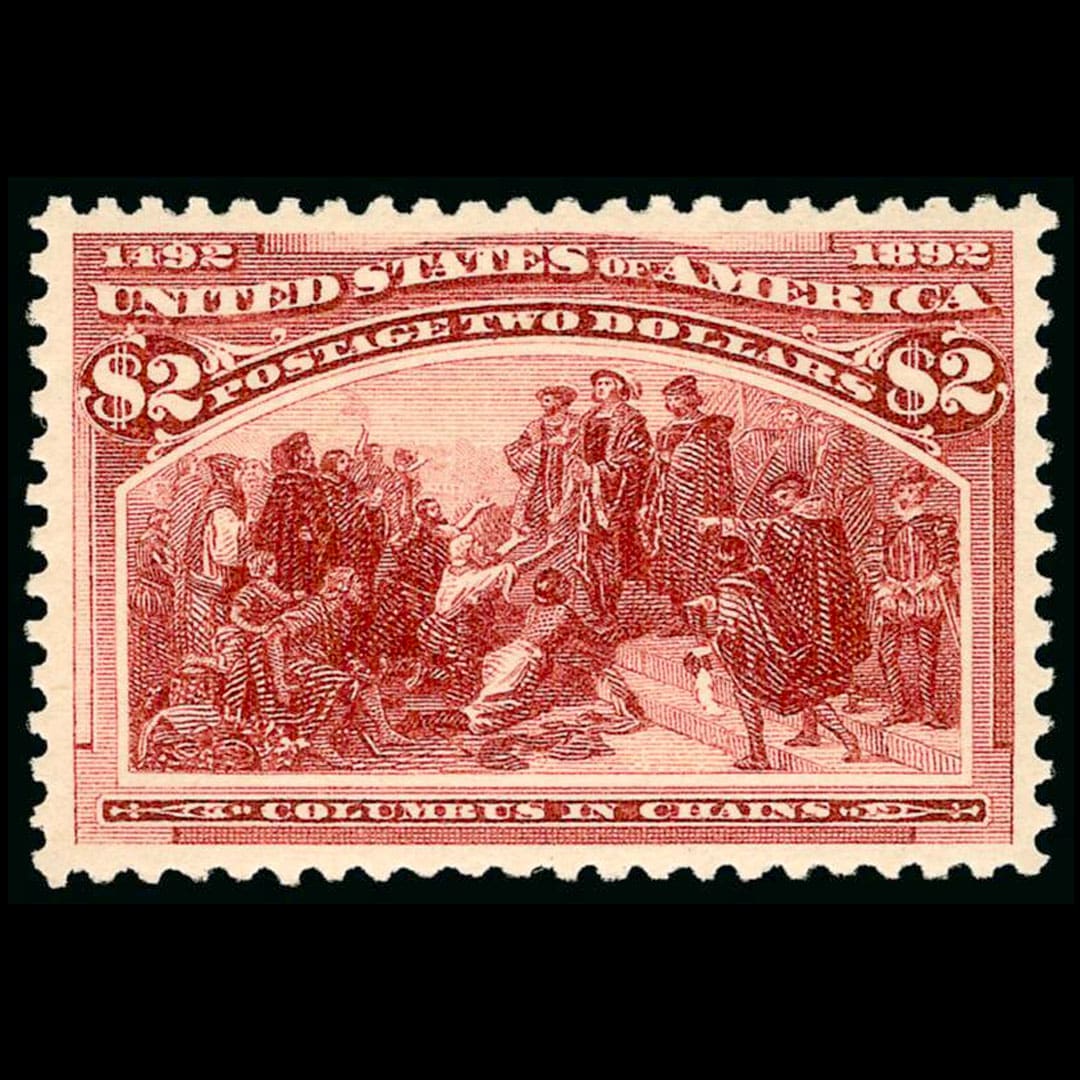

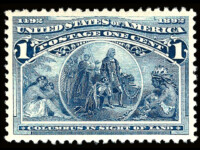
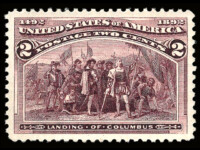
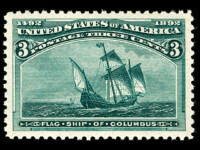
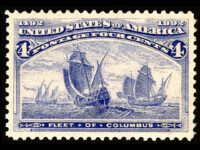
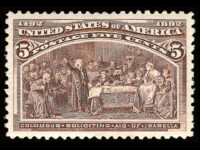
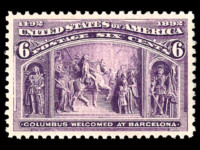
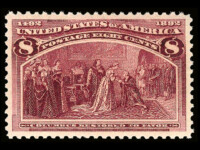
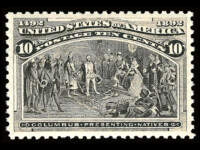
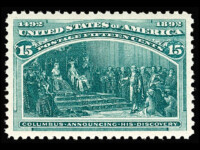
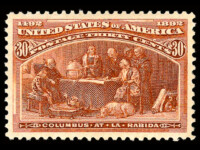
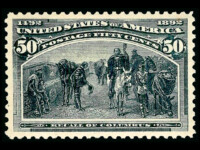
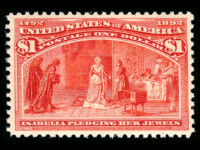
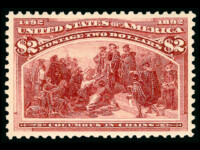
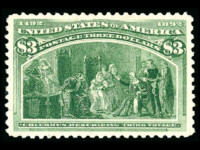
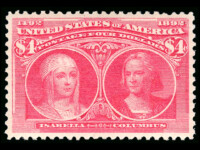
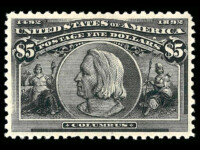









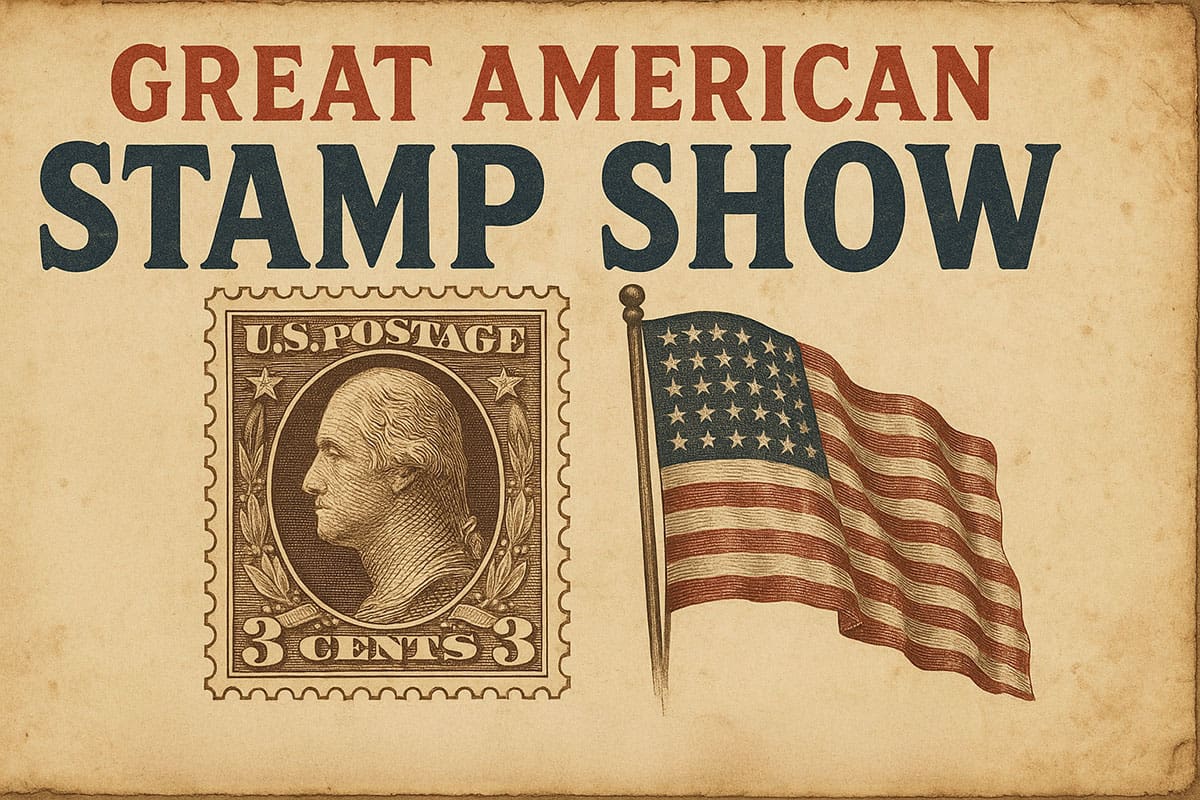

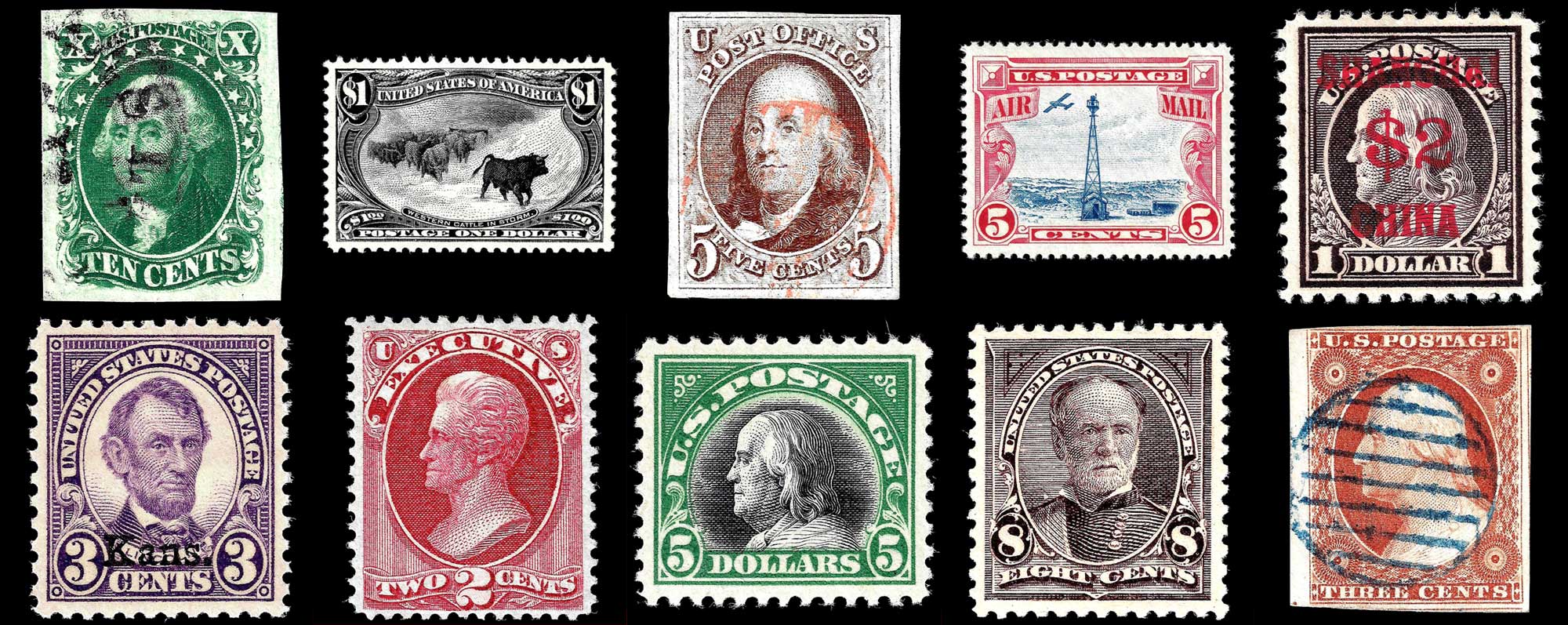
Ask A Question Or Leave A Comment